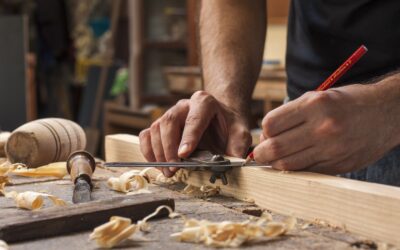The Transformative Power of Chinese Traditional Dance Costumes in Performance
Chinese traditional dance is an art form that carries centuries of history, culture, and emotion through every movement. While choreography, music, and stage design are critical elements of any performance, it is the Chinese traditional dance costume that plays a uniquely transformative role. These costumes are more than garments; they are storytelling instruments that breathe life into the dance, providing depth and dimension to each character and narrative portrayed on stage.
The Historical and Cultural Roots of Chinese Traditional Dance Costume
Chinese traditional dance costumes trace their origins back to the earliest dynasties, where court dances, folk rituals, and theatrical traditions like Chinese opera evolved alongside fashion and textile arts. The Han, Tang, Song, and Ming dynasties all contributed distinctive styles that continue to influence today’s costumes. Rooted in Confucian, Daoist, and Buddhist philosophies, these garments reflect themes of harmony, nature, morality, and spirituality.
The evolution of these costumes mirrors China’s historical changes, from the grandeur of the Tang dynasty’s flowing robes to the intricate embroidery of the Qing era. Each period left a distinct aesthetic legacy, and modern dance performances often draw from these historical references to recreate an authentic visual experience.
Costume as a Medium of Storytelling
The Chinese traditional dance costume plays an integral role in narrative development. Colors, patterns, and accessories convey character traits, social status, and emotional tone. For instance, red symbolizes joy and celebration, while white can signify mourning or purity. A noblewoman may wear elaborate silk garments with phoenix embroidery, while a peasant girl might appear in simpler, earth-toned fabric.
When a dancer dons a traditional costume, they become a living embodiment of the story being told. The costume’s movement in sync with the dancer’s gestures accentuates emotions and meanings that words or music alone cannot convey. This visual poetry amplifies the theatrical impact of the performance, making it both immersive and deeply expressive.
Design Elements that Enhance Movement
One of the most remarkable aspects of Chinese traditional dance costumes is their ability to enhance rather than hinder movement. Costumes are designed with the specific demands of dance in mind—sleeves that flow elegantly with arm movements, skirts that ripple with every spin, and accessories that create visual rhythms as they sway.
Long water sleeves, for example, are a hallmark of classical Chinese dance. These extensions of the garment can stretch over a meter in length and are used to exaggerate and extend arm gestures, creating a mesmerizing visual effect. Similarly, fans, ribbons, and tassels are often incorporated into performances, becoming tools of expression in the dancer’s hands.
The Psychological Impact on Dancers
The transformation brought about by wearing a Chinese traditional dance costume goes beyond the visual. Dancers often report feeling a shift in mindset when they put on their performance attire. The costume acts as a psychological trigger, helping them step into their role more completely. It becomes a ritualistic experience—part preparation, part spiritual alignment.
This psychological shift is vital in traditional Chinese dance, where emotion and intent are as important as technical execution. The costume allows dancers to internalize their characters, evoking confidence and authenticity in their portrayal. This deep connection between garment and performer results in a more compelling and emotionally resonant performance.
Regional Variations and Symbolism
China’s vast geography and diverse ethnic population have given rise to a wide array of regional dance styles, each with its own distinctive costume. The Dai people of Yunnan, for example, use graceful, bird-inspired movements reflected in their feathered costumes. The Mongolian dances incorporate wide, fur-lined robes that capture the spirit of the grasslands, while Tibetan dancers wear brightly colored aprons and long-sleeved gowns echoing the vibrancy of Himalayan culture.
These regional Chinese traditional dance costumes not only preserve ethnic identity but also promote cultural understanding. Each costume serves as a visual representation of a particular region’s lifestyle, values, and artistic heritage. Audiences can appreciate the diversity of China’s cultural landscape through the vivid language of costume and dance.
The Role of Modern Innovation
While tradition forms the backbone of Chinese dance, modern innovation has opened new possibilities for costume design. Contemporary materials like lightweight synthetics and stretchable fabrics offer greater flexibility, comfort, and durability. LED lighting and fiber optics have even been incorporated into some performances to create magical, futuristic effects while maintaining traditional aesthetics.
Costume designers now blend historical accuracy with modern functionality, ensuring that dancers can perform complex routines without restriction. This balance between old and new allows Chinese traditional dance to remain dynamic and relevant, appealing to contemporary audiences without losing its cultural soul.
Preservation Through Performance
In a rapidly modernizing world, the preservation of cultural traditions becomes increasingly important. Chinese traditional dance costumes serve as a tangible link to the past. Every performance that features these costumes is an act of cultural preservation, keeping ancient techniques of embroidery, weaving, and dyeing alive.
Many schools and professional troupes dedicate resources to training artisans and costume specialists to ensure that traditional craftsmanship is not lost. These efforts not only maintain high standards of visual authenticity but also empower new generations to connect with their heritage in meaningful ways.
International Recognition and Influence
As Chinese dance continues to gain international recognition, the role of traditional costumes becomes even more vital. Cultural festivals, world tours, and global competitions have introduced international audiences to the richness of Chinese dance traditions. The costumes act as cultural ambassadors, drawing attention to the intricate artistry and symbolism behind each performance.
Audiences around the world are often captivated first by the visual splendor of the costume before they begin to appreciate the depth of the dance itself. In this way, the Chinese traditional dance costume serves as both an invitation and a gateway to understanding one of China’s most revered art forms.
The Emotional Resonance of Costume and Performance
Perhaps the most transformative power of the costume lies in its ability to evoke emotion. The sweeping sleeves, vibrant hues, and ornate details stir something in both dancer and viewer. When a dancer performs in full costume, there’s a fusion of body, fabric, and spirit that creates a sense of timelessness.
Audiences are not merely watching a performance—they are transported to ancient courts, rural festivals, or mythological realms. The costume becomes a vessel of emotional transmission, moving hearts and minds across cultures and generations.
Conclusion
The Chinese traditional dance costume is a masterpiece of artistry, symbolism, and cultural memory. Its power to transform a dance performance lies not just in its visual beauty, but in its ability to convey stories, enhance movement, and deepen emotional resonance. As Chinese dance continues to evolve and enchant audiences around the world, the traditional costume remains its most powerful and evocative ally—a silent yet eloquent storyteller woven in silk and thread.







